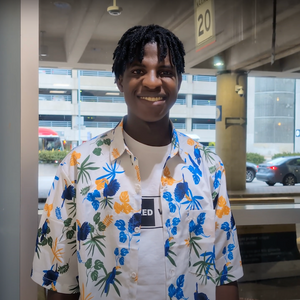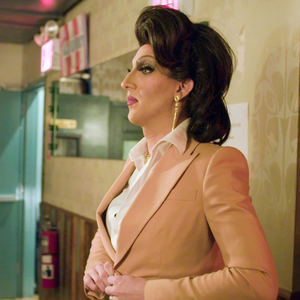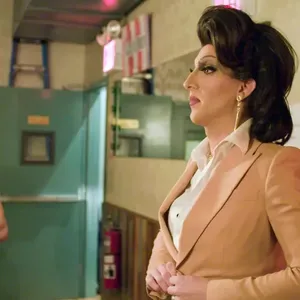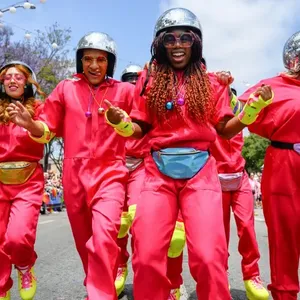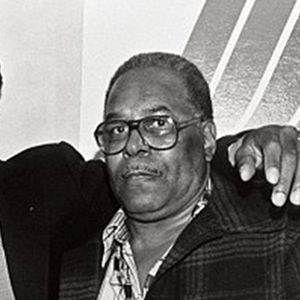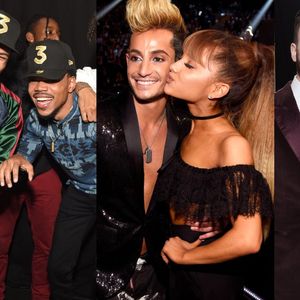
CONTACTStaffCAREER OPPORTUNITIESADVERTISE WITH USPRIVACY POLICYPRIVACY PREFERENCESTERMS OF USELEGAL NOTICE
© 2024 Pride Publishing Inc.
All Rights reserved
All Rights reserved
By continuing to use our site, you agree to our Private Policy and Terms of Use.
As HRC kicks off it's new equality speaker series tonight, with renowned developmental and clinical psychologist Diane Ehrensaft discussing gender nonconforming and transgender children at HRC's Washington, D.C. headquarters at 6:00 pm (it'll also be air live at hrc.org/equalitytalks), we asked Ehrensaft to chat with fellow authors Genny Beemyn and Susan Rankin.
Ehrensaft, the director of mental health of the newly formed Child and Adolescent Center in the San Francisco Bay Area, has been working with and writing about gender-nonconforming children and their families for three decades and put her experience into her recent book, Gender Born, Gender Made: Raising Healthy Gender-nonconforming Children. Beemyn, the director of the Stonewall Center at the University of Massachusetts, Amherst, is a leading expert on the experiences of transgender people in the United States and on the development of transgender-inclusive college policies and practices, while Rankin is an associate professor at The Pennsylvania State University and a senior research associate at the Center for the Study of Higher Education. The two co-authored TheLives of Transgender People, based on one of the largest surveys ever of transgender and gender non-conforming individuals.
Ehrensaft: In your book, The Lives of Transgender People, so many of the interviewees said they knew from an early age that they were "different." Did any of them refer specifically to the kind of help they wish they could have gotten as a child?
Beemyn: Many of the interviewees, especially the MTF [male-to-female] interviewees, indicated that they had no support from their families growing up. On the contrary, some of the trans women reported that they were physically or sexually assaulted for indicating to their parents that they felt female, or they were sent to therapists or institutionalized to be "cured." All of the MTF interviewees who dressed and presented as female as children had to do so in secret because of family opposition or feared family opposition. How different their lives would have been had they been able to express their "true" selves from a young age! I, for one, am envious of the children today who have supportive parents and can present as themselves from a young age and not have to go through the puberty that is wrong for them.
Ehrensaft: In the book there were a whole group of crossdressers. I wondered if these cross-dressers were actually transgender women at root, but grew up in a generation when the furthest out they felt comfortable going was in female expressions of dress? Do you think those crossdressers you interviewed or surveyed might be the transgender girls I see in my office today if they had been born a generation later -- or more?
Beemyn: While I do think that some people's gender identity and expression is as crossdressers, I would agree that many would have transitioned had they felt comfortable doing so or felt that their circumstances allowed it. We spoke with a number of MTFs who had seen themselves as crossdressers for many years, because they did not want to deal with the tremendous upheavals that transitioning would cause in their lives. They eventually realized, though, that they had to be true to themselves. I think it is telling that the youngest self-identified crossdressers we interviewed were in their 30s. It is possible that crossdressers come out publicly later in life, so were missed by our survey, but I think it reflects more the lack of identification that younger generations of trans people have with that label and concept. Most crossdressers live a bifurcated identity -- male sometimes, female other times -- whereas younger trans people simply have one, often non-binary gender identity, whether it is as genderqueer, trannyboi, bigendered, transdyke, etc.
Ehrensaft: I say in my book that we must all listen to the children and learn from them. But we also must glean wisdom from our elders. What do you think the children growing up today who are gender-nonconforming or transgender could learn from the "elders" that you have studied -- from college age through old age?
Beemyn: I think we all need to appreciate the strength and bravery of transgender people in previous generations who stood up for themselves against a society and a medical profession, in particular, that denied them their humanity. We would not be where we are today, with tweens being able to get androgen blockers and transition, if it was not for the MTFs and FTMs [female-to-males] who insisted on their right to appropriate counseling and access to hormones and surgeries. We are not that far removed from a time when many psychologists did not think that FTMs really existed and when only MTFs who would be "passable" as women and who would ostensibly become heterosexual after transitioning could obtain gender confirmation surgeries. While there is obviously still a long way to go before all trans people receive proper medical care, the contributions that "elders" have made to this struggle should not be forgotten.
Rankin: A few years ago, I remember you saying on NPR that you were among a very small minority of therapists who listened to gender nonconforming children in how they saw their gender, rather than following the Kenneth Zucker model in forcing these children to act gender-normative. To what extent do you feel less of a lone voice today?
Ehrensaft: A sea change has occurred since I was interviewed in 2008 for the NPR All Things Considered broadcast. There is increasing public and professional awareness of gender nonconformity and transgender identity in children and youth being a healthy and creative variation on gender, rather than a disease to be cured. Community clinics and private mental health practitioners have stepped up to the plate and seem to be growing in astronomical proportions to meet the needs of these children, build their resilience, support their creativity, and counteract the harmful effects of therapies that attempt to get a child to accept an assigned gender or the expressions associated with that gender, including the most recent Child and Adolescent Center in the San Francisco Bay Area, of which I am a founding member and Director of Mental Health.
Beemyn: What is it going to take for the standard practice to be, as you say in your book, "follow the child's lead and go where the child takes us?"
Ehrensaft: More people like myself and my colleagues speaking up to demonstrate the good effects of our gender affirmative model; scientific research to back that up; parents speaking up to advocate for their children; professionals and activists supporting the parents to do this; community education and support; and simply, listening to what the children have to teach us. And my best hope is that it never takes another youth dying because someone did not listen or follow the youth's lead.
Rankin: More and more children are finding support from their families when they identify as gender nonconforming and are able to live as their "true" gender, including go through the puberty that is right for them. How do you see this change affecting what it means to be transgender and the nature of transgender communities in the future?
Ehrensaft: It will get better. As Caitlin Ryan and her associates have so eloquently demonstrated in their Family Acceptance Project, the GLBT youth who found acceptance and support in their families had better mental health outcomes; youth who did not receive that acceptance and support had worse mental health outcomes. With family support, transgender [identity] will come with pride, self-confidence, and expansiveness, rather than fear, a need to hide, and anxiety. People will more fully be be able to be their true gender selves at younger and younger ages and the transgender communities of the future will be ones, I hope, not sequestered from their families, but interwoven with them.
Beemyn: While we see many female-assigned individuals who identify as transgender or gender nonconforming at the college-level, we see very few male-assigned individuals who do so because of the severe social stigma around male-bodied people being feminine in any way. Instead, they come out to themselves and others later in life. Do you think this imbalance will change substantially anytime soon?
Ehrensaft: It is already beginning to change, with the ratio between FTM and MTF young people beginning to even out in child and adolescent clinics. As long we fight to make room for every unique gender identity and expression, which will include confronting the sexism, genderism, and male hegemony that says male is better than female and transgressions of males into the realm of feminine are not to be tolerated, we will hopefully move to a place where people won't have to wait until they are out of the grips of adults who hold control over them and can be their affirmed true gender self as early as they know it to be, whether that be male, female, or other and whether they started with a female-assigned or male-assigned body.
Want more breaking equality news & trending entertainment stories?
Check out our NEW 24/7 streaming service: the Advocate Channel!
Download the Advocate Channel App for your mobile phone and your favorite streaming device!
From our Sponsors
Most Popular
Here Are Our 2024 Election Predictions. Will They Come True?
November 07 2023 1:46 PM
17 Celebs Who Are Out & Proud of Their Trans & Nonbinary Kids
November 30 2023 10:41 AM
Here Are the 15 Most LGBTQ-Friendly Cities in the U.S.
November 01 2023 5:09 PM
Which State Is the Queerest? These Are the States With the Most LGBTQ+ People
December 11 2023 10:00 AM
These 27 Senate Hearing Room Gay Sex Jokes Are Truly Exquisite
December 17 2023 3:33 PM
30 Steamy Photos of Folsom Street Fair 2023 Debauchery
October 15 2023 11:06 PM
10 Cheeky and Homoerotic Photos From Bob Mizer's Nude Films
November 18 2023 10:05 PM
42 Flaming Hot Photos From 2024's Australian Firefighters Calendar
November 10 2023 6:08 PM
These Are the 5 States With the Smallest Percentage of LGBTQ+ People
December 13 2023 9:15 AM
Here are the 15 gayest travel destinations in the world: report
March 26 2024 9:23 AM
Watch Now: Advocate Channel
Trending Stories & News
For more news and videos on advocatechannel.com, click here.
Trending Stories & News
For more news and videos on advocatechannel.com, click here.
Latest Stories
White House announces new rules on background checks for firearms sales in America
April 11 2024 5:00 AM
'Florida has a First Amendment problem' — judge rules trans teacher can use 'Ms.'
April 10 2024 6:33 PM
Here's why soccer fans are booing USWNT player Korbin Albert
April 10 2024 6:26 PM
Trans and nonbinary migrants file complaint over treatment at ICE detention facility
April 10 2024 6:00 PM
X likely profited from promoted post calling for LGBTQ+ death penalty
April 10 2024 3:11 PM
Giselle Byrd is taking center stage — and helping others do the same
April 10 2024 2:15 PM
How Beyoncé's Cowboy Carter advances equality
April 10 2024 1:39 PM
The North Face faces conservative boycott for sponsoring a queer summer camp (exclusive)
April 10 2024 8:26 AM
















































